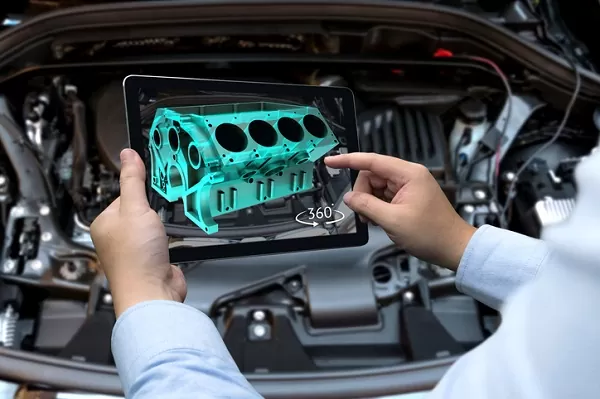Buying a car that has been in an accident is always risky. However, do not cross out such a car from the list of potential purchases. If you want to buy a car or get cash for junk cars in Las Vegas then you are in the right place. You will learn how to recognize a vehicle after a rollover.
Why Are Emergency Vehicles Dangerous?
The participation of a car in an accident is not a reason to abandon the car if its structure and vital components have not been damaged. However, a car after a rollover is one of the riskiest purchases. In the presence of severe damage, especially after multiple rollovers, professional repairs are unprofitable, so some drivers decide to do the restoration themselves. After it, cars become simply life-threatening – the rigidity of the frame decreases, the geometry of the chassis is disturbed, and vital systems do not function properly. The list of consequences is huge.
Although such vehicles should be scrapped, they are still in circulation. People who make money selling crippled cars are good at hiding the traces of serious accidents and subsequent repairs.
Rollover Damage Checklist
Many cars after a rollover are sent to the scrap or for dismantling, as most have structural damage. Here is a list of points that you should pay attention to when inspecting such a car.
- First of all, check the body panels and elements that can be seen under the hood without opening deep bowels. By doing this before checking the chassis and other important components, you can save time and money, because you can immediately identify something that confirms the complete unsuitability of the car.
- Inspect the roof panel. When it’s just dented from hitting the ground, it can be replaced or straightened out, but if deformed from broken struts, repair can be costly and inefficient.
- Check the windshield. If it cracked not due to the displacement of the racks, but due to hitting some hard object like a stone, replacement is possible without consequences. Otherwise, the repair will cost a pretty penny and will not guarantee safety during the further operation of the vehicle.
- Check up gaps in doors. If the gaps are significantly larger or smaller than usual, this indicates a deformation of the case. Again, minor defects can be corrected, but competent straightening on professional equipment is required.
- If the vehicle has a manual transmission, check that all gears are present and correct. This is often overlooked but may indicate that the gearbox is damaged.
- Examine gaps of a luggage carrier/rear door. If they are slightly different on both sides, this may mean that the loops have moved. But when one side is much larger than the other, the entire rear must have shifted
- Explore the power unit. If the car was left on its side or roof for a long time, oil could get into the cylinder and hydraulically lock the engine. Many modern models have an automatic emergency shutdown system that stops the motor at the time of an accident to prevent fire so that it can subsequently work normally. And if it smokes at first, it’s probably just oil burning.
- Check the coolant level. Refill the tank if necessary, start the car engine, and check that there are no leaks.
- Diagnose the location of the engine and transmission. Check for broken hardware mounts. Look for kinks, cracks, and suspicious welds.
Obviously, if all of the above is damaged, an economical repair is not possible. If only one or two minor deviations are found, one can hope for an inexpensive recovery. You can move on to checking the chassis, wheels, and underbody.
You will need special equipment for:
- checking the convergence, camber, and castor of all wheels.
- cross measurement of distances between important points below: you can do this manually and make sure that there are no anomalies or shifts that do not exceed a couple of millimeters.
- measuring the thickness of the paintwork.
Traces of The Accident In The Cabin
Cracks, bent metal inserts, protruding plastics, any abnormal gaps, steering wheel tilting left/right, and doors and windows that do not close well can indicate a car overturns.
It happens that even the floor is deformed, and the torn-off chairs are tightly welded before resale, ceasing to move or be adjusted.
Also, pay attention to the airbag indicator. It should appear and disappear after the ignition is turned on. In the absence of an indicator, most likely, the airbag has worked. Broken or obviously non-original seat belt anchors can also be a sign that they have been replaced due to a serious accident.
It would be useful to check the dates on car parts. Some are marked with the year of production – the numbers can be printed on stickers or molded in plastic. Parts whose age is different from the car are common in a used car, but too fresh, especially in large quantities, should alert.
Non-original windows are also suspicious. They are not a consequence of the participation of a car in an accident. However, if all windows were replaced at the same time, then this is a cause for concern. In cars after a rollover, such a replacement can be on the driver’s side or the entire perimeter.
Final Thoughts
Of course, not every car after a rollover is a bad choice. A slightly dented car is not a threat and in some cases does not even need a major overhaul. If it is in good technical condition, all that remains is to study the documentation with the confirmed amount of repairs and a list of used parts. If you are a car owner and are looking for a company that buys junk cars in Las Vegas pay attention to the reliable company called JunkCarsUs. This company buys non-running, damaged, totaled, junk cars at attractive prices, you can ask for help wherever you are.







